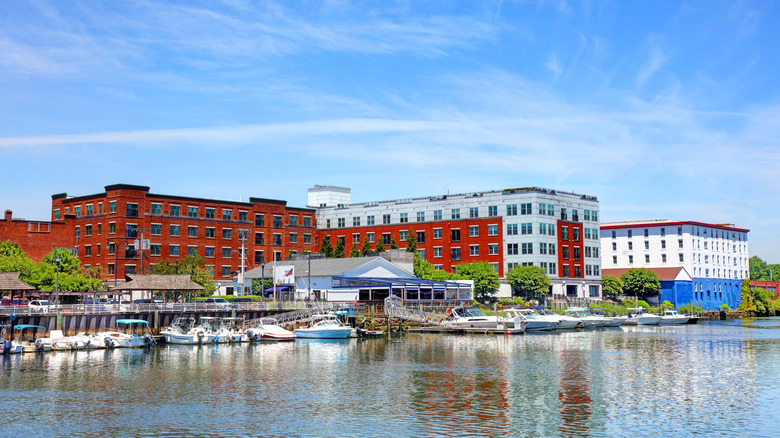As darkness descends, the former bastion of impenetrable defense in the Netherlands stands tall, encircled by ink-black moats.
The water taxi originating from Woudrichem, a neighboring town, slowly moves away after departing. Currently, only the sound of wind circling the castle remains, accompanied by the creaking of planks on the pier beneath. The entrance to the castle is securely shut.
Of course, as a visitor, you possess a key—but uncertainty might creep in about whether it’s truly sufficient to unlock the castle. Yet, surprisingly, the entrance begins to shift, leaving you face-to-face with the spirits all by yourself.
Behind closed doors
Waterfowl and wild cattle dot the landscape of ponds and flooded meadows, at the confluence of the Waal and Maas rivers, with the castle rising out of this solitude. It has hardly any windows, just bare, metre-thick walls.
It was once a prison for political prisoners, the most famous being Hugo Grotius. The father of modern international law became embroiled in a political power struggle in 1618 and was sentenced to life imprisonment.
He was held behind 13 locked and heavily guarded doors. Nevertheless, he managed to escape in 1621 with the help of his wife, Maria van Reigersberch. The scholar hid in an empty book case and the unsuspecting guards carried him out of the castle. By the time they realised what had happened, he was already on his way to Paris.
Today, you can have a much more pleasant stay in one of the 18th century soldiers’ cottages. And in the morning, in the annex, you can enjoy a lovingly-prepared breakfast.
Buy your own prison
More known for tulips and windmills, the Netherlands also has plenty of castles and palaces. Muiden Castle, near Amsterdam, matches everyone’s idea of a knight’s castle with its four round turrets, moat and inner courtyard.
The castle is known as the setting for a medieval criminal case. When the Count of Holland, Floris V, acquired the walls in around 1285, he could not have imagined that he had bought his own prison. In 1296 he was kidnapped by rival nobles and imprisoned in Muiden Castle before he was killed by being stabbed 20 times.
Another big draw in the world of Dutch castles is Doorn Manor. It’s known for its interior, with furnishings dating back to German Emperor Wilhelm II, who resided there after his abdication and exile.
The emperor’s old clothes
Wilhelm II lived in the manor house from 1919 until his death in 1941. His remains lie in a small mausoleum in the manor gardens, a few metres from the graves of his five dogs. In his will he stated that he could only be reburied on German soil upon restoration of the German monarchy.
When the emperor died, the house fell into a deep sleep, which is the reason why everything still looks as it did back then. The furnishings are mainly from the Berlin Palace, Bellevue Palace and the New Palace in Potsdam, Germany, and were transported to the neutral Netherlands on five different trains.
When he carried out his private correspondence, he did so in a horse’s saddle screwed to a platform in front of his desk. The Wilhelmine slippers are still lying ready in the bedroom, one of his cigars is perched in an ashtray and the wardrobes are filled with the emperor’s old clothes.
Denying history
His special fork is still lying on the dining table with a blade on the prong on the left so that the fork can be used for cutting. This was due to the fact that Wilhelm’s left arm was shorter and paralysed from birth.
You can also view the emperor’s bathroom, though it wouldn’t be considered very opulent by modern standards.
Perhaps as fans of popular TV series “Downton Abbey”, today’s visitors to Doorn Manor are also increasingly interested in the people from downstairs, the servants. Their living quarters in Doorn have also been completely preserved.
But see Doorn Manor as a denial of history, says curator Cornelis van der Bas. “The First World War doesn’t occur here. Wilhelm II acted as if it had never happened and instead reenacted the 19th century.”













Leave a Reply